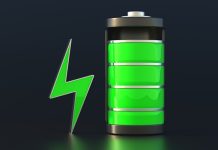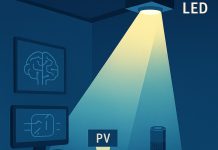
A new breakthrough in clean energy research could make it easier and more affordable to produce hydrogen fuel using sunlight—even on cloudy days.
Karthik Shankar, an engineering professor at the University of Alberta, is leading a project that uses tiny structures called semiconductor nanowires to split water into hydrogen and oxygen, offering a sustainable and efficient way to store solar energy.
Hydrogen fuel is considered one of the cleanest energy sources because it only releases water when used.
While we already have technologies that use solar panels and electrolysis (a process that splits water using electricity) to produce hydrogen, that method loses a lot of energy along the way.
Shankar’s approach eliminates the middle step, using sunlight directly to power the water-splitting process, making it much more efficient.
The research, done in partnership with the Technical University of Munich and published in the Journal of the American Chemical Society, centers on a special material called carbon nitride. It’s made from urea—a cheap and widely available substance found in fertilizers.
When carbon nitride absorbs sunlight, it excites electrons, creating what scientists call “electron-hole pairs.”
Normally, these pairs would quickly cancel each other out. But by pairing carbon nitride with another low-cost material, titanium dioxide, the team creates a junction that keeps the particles apart just long enough to react with water. The result? Hydrogen gas from protons and oxygen from hydroxyl ions.
One of the most exciting aspects of this technology is its ability to work even in low-light conditions.
Shankar’s team designed the carbon nitride surface with vertical nanowires that can catch scattered, indirect sunlight, meaning the system can keep running even on overcast days. This overcomes one of the major limitations of traditional solar panels, which lose efficiency without direct sun.
Another advantage is energy storage. While solar energy typically needs to be stored in batteries—an area where technological progress has been slow—hydrogen can be compressed, stored easily, and used later as needed.
Shankar also points out that this method is much cleaner than silicon-based solar panels, which dominate the market today.
Making silicon panels requires extremely high temperatures and emits significant amounts of greenhouse gases. Plus, most commercial silicon is produced in China and Russia, adding a layer of geopolitical complexity.
With its reliance on cheap, Earth-abundant materials like urea or melamine, and the potential to scale up in just a few years, this innovation could be a game-changer in the transition to cleaner energy.
Source: University of Alberta.



